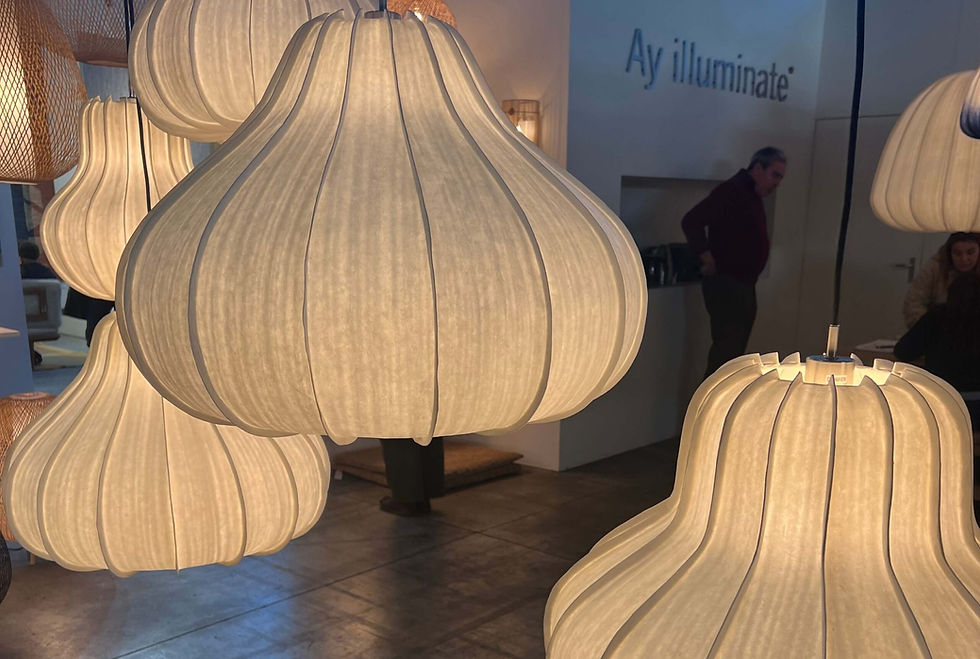History of Turkish Design: Part 1
- Absolute Project Management
- Jan 12, 2024
- 3 min read
Updated: Mar 4
Well, when someone says Türkiye, the first thing that comes to mind is undoubtedly its rich food culture, but more than that- Turkey has a fabulous and unique design style. The Ottoman and Byzantine Empires cultural heritage and architectural styles have in particular influenced Turkish design over the course of hundreds of years.
Grand Mosque of Bursa, Türkiye
Before Turkey became a republic in 1923, it was known as the Ottoman Empire for 623 years. The Ottomans prioritised art and architecture and emphasised their interest by constructing many pulchritudinous buildings and interiors.
Mimar Sinan one of the chief imperial architects of the Ottoman empire is still famously known by Turkish society even today. His impressive structures, style, master plans and complex design approaches have beautifully marked many places in Turkey. The subtle wit in his design approaches remains as mystery. His 350 masterpieces have significantly driven the style to a different level and marked his pieces in history with golden marks.
Before the Ottoman Empire, the Byzantine Empire ruled some parts of Turkey, which also significantly impacted the concept of art. The Hagia Sophia in Constantinople (Istanbul) was first constructed in its current form as an orthodox church between 532-537, later converted to a catholic church, mosque, museum and now the Hagia Sophia Grand Mosque. The Byzantines focused on creating particularly refined buildings, filled with extravagant use of marble, mosaic decorations, geometrical designs and light spaces with high windows. The Hagia Sophia is viewed as one of the best examples of Byzantine architecture.
Hagia Sophia, Istanbul, Türkiye
Below are the crucial historic design features, many of which can still be found in elements of modern Turkish design.
Furniture and decorative objects:
Handcrafted items were a crucial element for the Ottomans. Many people financed their households through skilfully-made objects and furniture.
Mother-of-pearl inlay tables, ‘Sini’ coffee tables, and copper and wood furniture/objects made up a significant part of the home.
Oriental low-cushion couches were often used to create accessible and comfortable seating areas.
Handmade silk embroideries, motif rugs called ‘kilims’, needlework, and mosaic lamps were used as decorative elements throughout spaces.

Handcrafted items

Mosaic lamps

Low cushion seating
Colours:
‘Guest Culture’ and family has always played a vital part in the traditions and beliefs of the Ottoman Empire. Being hospitable and generous towards your guests was and is still considered an essential part of Turkish culture. Therefore, when decorating and furnishing homes, Ottoman society took great care to design stylish, luxurious but cosy spaces to create a strong aura. Using a rich colour palette is the first step to the elegancy.
Earth tones were extensively used for friendly, inviting, and glamorous spaces.
Reds, maroons, golds, silvers, coppers, and other vibrant colours were used for stylish, lively, and wealthy-looking spaces.
Blue, green and turquoise tones were used extensively for fresh, serene, and revitalising atmospheres.
Calligraphy:
The connection between the Ottoman and Islam led to Arabic calligraphy and ‘Tugra’ (the Ottoman signature). Calligraphy had a significant role in depicting Islam’s ornamental and symbolic side, often used on ceilings, walls, columns, and decorative objects to create a sense of belonging while also reflecting Turkey’s cultural and religious heritage.
Grand Mosque of Bursa, Türkiye
Patterns:
The Ottoman design style carries vital elements of floral motifs inspired by nature and geometric patterns. These design elements and patterns appear on tiles, textiles, and furniture.
Human figures cannot be seen in nearly any of the famous interiors; this is because, due to their strong connection to Islam, using figures was avoided as it was believed that to do so would be idolatry. Instead, natural and loop designs – representing life, growth, and unity of God are used.
Flowers like roses, tulips, pomegranates, and carnations were repeatedly used for floral designs. Each flower has a meaning behind it, so Ottoman designers used each flower consciously to reflect a story – for example, tulips were used to symbolise love and perfection.
Material:
The material of choice was an integral factor for interior design. As aesthetics was an important design feature, soft and sublime fabrics are used for sumptuous effects. Velvet, coquette (cotton fabric with floral and delicate swirls), kama (lampas-woven silk with repeated flower motifs) and taffeta (lightweight silk) are often used for soft furnishings, furniture, and decorative elements.
Coming soon – Part 2 of Turkish Interior Design – How the style has evolved in the modern world!
Do you need help with your renovation in London or Brighton? Contact us now.


